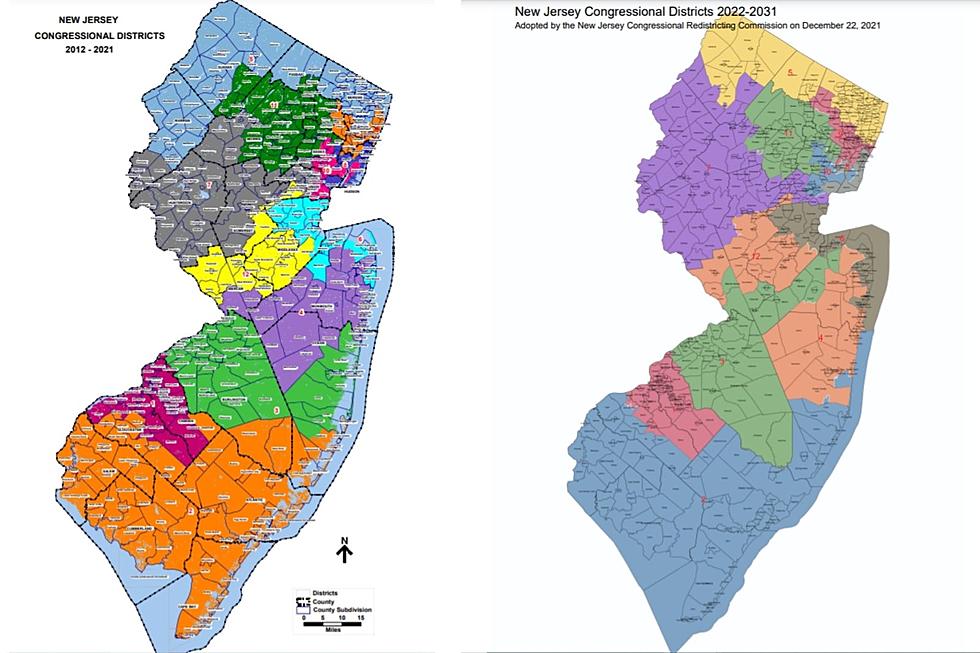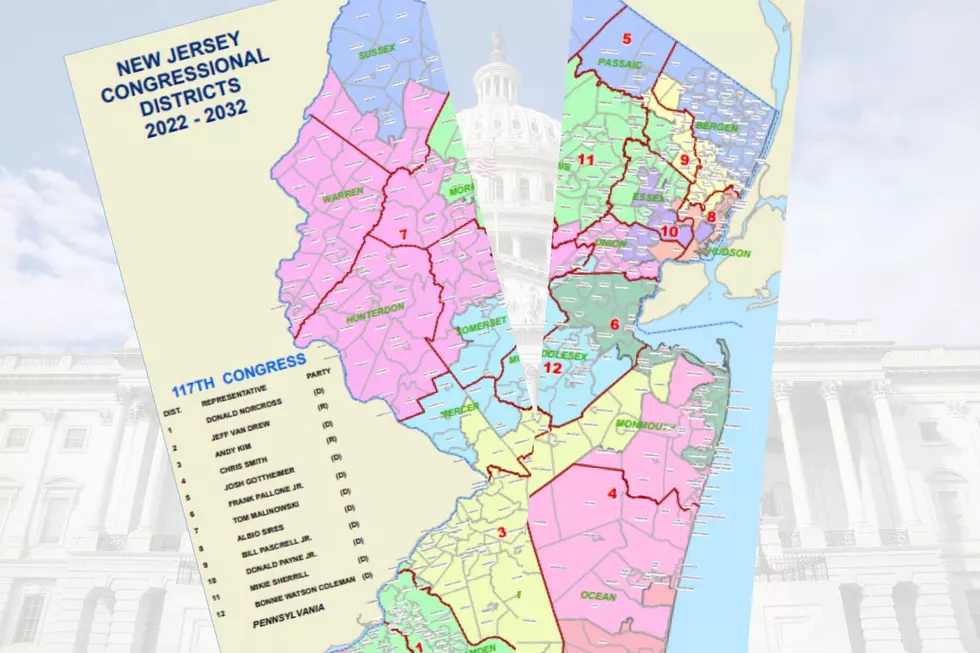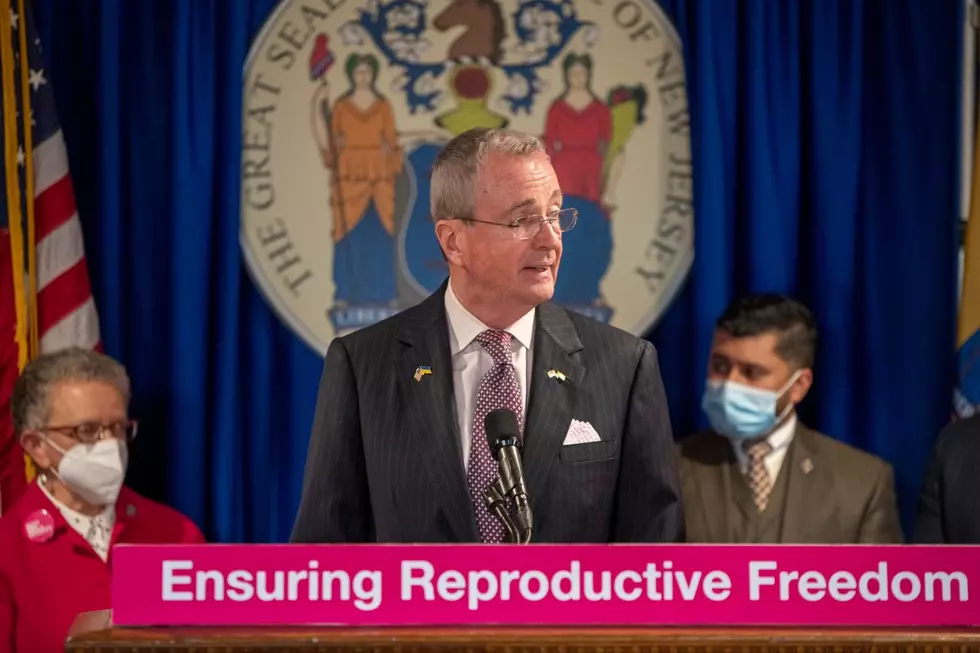
NJ has a new congressional map — and Republicans are fuming mad about it
TRENTON – New boundaries for New Jersey’s congressional districts were approved by a state commission Wednesday, and they give Republicans a better chance of picking up the seat now held by Democratic U.S. Rep. Tom Malinowski.
The tiebreaking member of the Redistricting Commission, former state Supreme Court Justice John Wallace Jr., sided with the map proposed by Democrats over one proposed by Republicans. Nine of the 12 seats favor Democrats, and the map will likely produce fewer close races over the next decade.
The commission posted a link to a PDF version of the map on its website, on which people can zoom in to see specific towns. Data and detailed maps of the municipalities that were split between congressional districts were not immediately available but should be added in the coming days.
The map will be in effect for next year's midterm elections, which will determine whether Democrats hold onto the House, and will be in place through 2030.
'I concluded that fairness dictates that the Democrats had the opportunity to have their map used' — John Wallace Jr.
Tiebreaker: It was the Dems' turn
Wallace said both parties’ maps were constitutional. He said tests applied to both maps showed the Democrats’ map was better in terms of partisan fairness – “that is, no district may be formed solely to favor any political party or the election of any person” – but that he didn’t give that any weight because the parties didn’t use the tests in drawing up their submissions.
“In the end, I decided to vote for the Democratic map simply because in the last redistricting map, it was drawn by the Republicans,” Wallace said. “Thus, I concluded that fairness dictates that the Democrats had the opportunity to have their map used for this next redistricting cycle.”
The map solidifies the districts held by three Democratic incumbents that have been targets of Republicans – Reps. Josh Gottheimer of Wyckoff, Andy Kim of Moorestown and Mikie Sherrill of Montclair – but adds Republican voters to the 7th District represented by Malinowski, D-Ringoes.
Redistricting actually pushes two incumbents into the same district – Kim and U.S. Rep. Chris Smith, R-Hamilton. But they aren’t expected to face off, as Smith intends to move to and run in the 4th District, the district he has represented in various configurations since 1981.
District-level details
Malinowski won by the closest margin of any Democrat in the country last year, and his district now stretches into solidly Republican northwestern New Jersey, adding all of Warren County and nine towns in Sussex County that had been in the 5th and 11th districts. The district now stretches from the Delaware Water Gap Recreation Area to Lambertville and out to Linden.
In South Jersey, where the three districts needed to add population as part of making the state’s 12 districts equal, that was achieved by making the 2nd District of Rep. Jeff Van Drew, R-Dennis, more Republican and having Kim’s 3rd District shed the GOP stronghold of Ocean County and instead stretch north from Burlington County into Mercer and Monmouth counties, such as to Hamilton and out to Freehold and Holmdel.
The 5th District represented by Gottheimer drops the northwestern New Jersey section that shifts to the 7th District and gains Democratic areas of Bergen County such as Englewood, Fort Lee and Tenafly.
Similarly, the 11th District represented by Sherrill gains Maplewood, Millburn and South Orange while dropping towns in Passaic and Sussex counties where she lost in last year’s election.
'We’re disappointed in a process that disenfranchises most of the state’s voting population.'
GOP fumes over safer seats
Doug Steinhardt, the chairman of the commission’s Republican delegation, said the GOP map was better, leaving 85% of voters in their current districts to avoid voter confusion and maintaining five competitive districts in which voters could meaningfully impact the outcome of November elections.
“Our map was designed to empower New Jersey voters. The final map we feel is just the antithesis of that,” Steinhardt said. “Our map provided voters, including minority voters, with meaningful opportunities to impact elections and met or exceeded every standard we were provided.”
“To be candid, we’re disappointed in the final result,” he said. “We’re disappointed in a process that disenfranchises most of the state’s voting population. We’re equally disappointed in a process that purported to promote equity and fairness and competition but, in the end, has skewed those virtues.”

Janice Fuller, the chairwoman of the Democratic delegation, said the final map embraces the state’s diversity and limits the number of times that counties and municipalities are split.
Fourteen of the 565 municipalities are split between more than one district. Such splits are impossible to avoid, as the standards for congressional redistricting require all the districts to have nearly precise total populations – unlike for state legislative districts, which must be close but in an acceptable range.
“The map maintains core competitive districts and does not gerrymander to favor one political party,” Fuller said. “We maintain all of the existing majority-minority districts and have ensured a decade of real and meaningful representation by minority voters.”
Michael Symons is State House bureau chief for New Jersey 101.5. Contact him at michael.symons@townsquaremedia.com.
Census 2020: The 20 biggest places in New Jersey
NJ towns and their nicknames
More From Beach Radio










